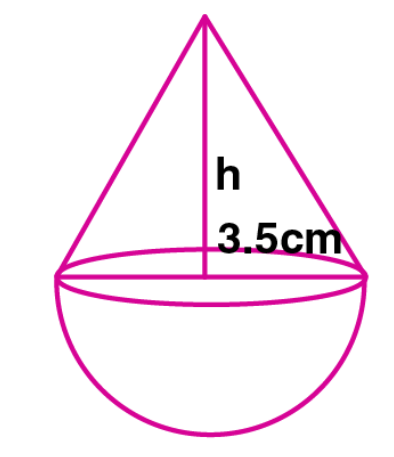Solution;

Given radius of the cone, r = 3.5 cm
Radius of hemisphere, r = 3.5 cm = 7/2 cm
Volume of hemisphere = (2/3)r3
= (2/3)×(22/7)×(7/2)3
= (2/3)×(22/7)×(7/2)×(7/2)×(7/2)
= (22/3)×(7/2)×(7/2)
= 11×49/6
= 539/6 m3
Volume of cone = 2/3 of volume of hemisphere
= (2/3)× 539/6
= 539/9 m3
Volume of cone = (1/3)r2h
(1/3)r2h = 539/9
(1/3)×(22/7)×(7/2)2×h = 539/9
h = 539×3×2/9×11×7
h = 14/3
h = 4.667
h = 4.67 m
Hence the height of the cone is 4.67 m.
Slant height of cone, l = √(h2+r2)
= √((14/3)2+(7/2)2)
= √((196/9)+(49/4))
= √((784/36)+(441/36))
= √(1225/36)
= 35/6 m
Surface area of the buoy = Surface area of cone + surface area of the hemisphere
= rl + 2r2
= r(l+ 2r)
= (22/7)×(7/2)×((35/6)+2×(7/2))
= 11×((35/6)+7)
= 11×(5.8333+7)
= 11×(12.8333)
= 141.166 m2
= 141.17 m2
Hence the Surface area of the buoy is 141.17 m2.
